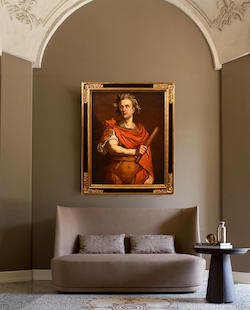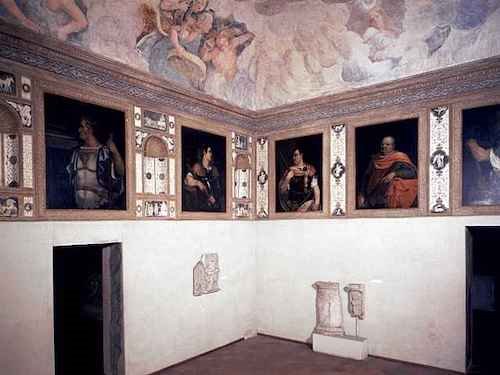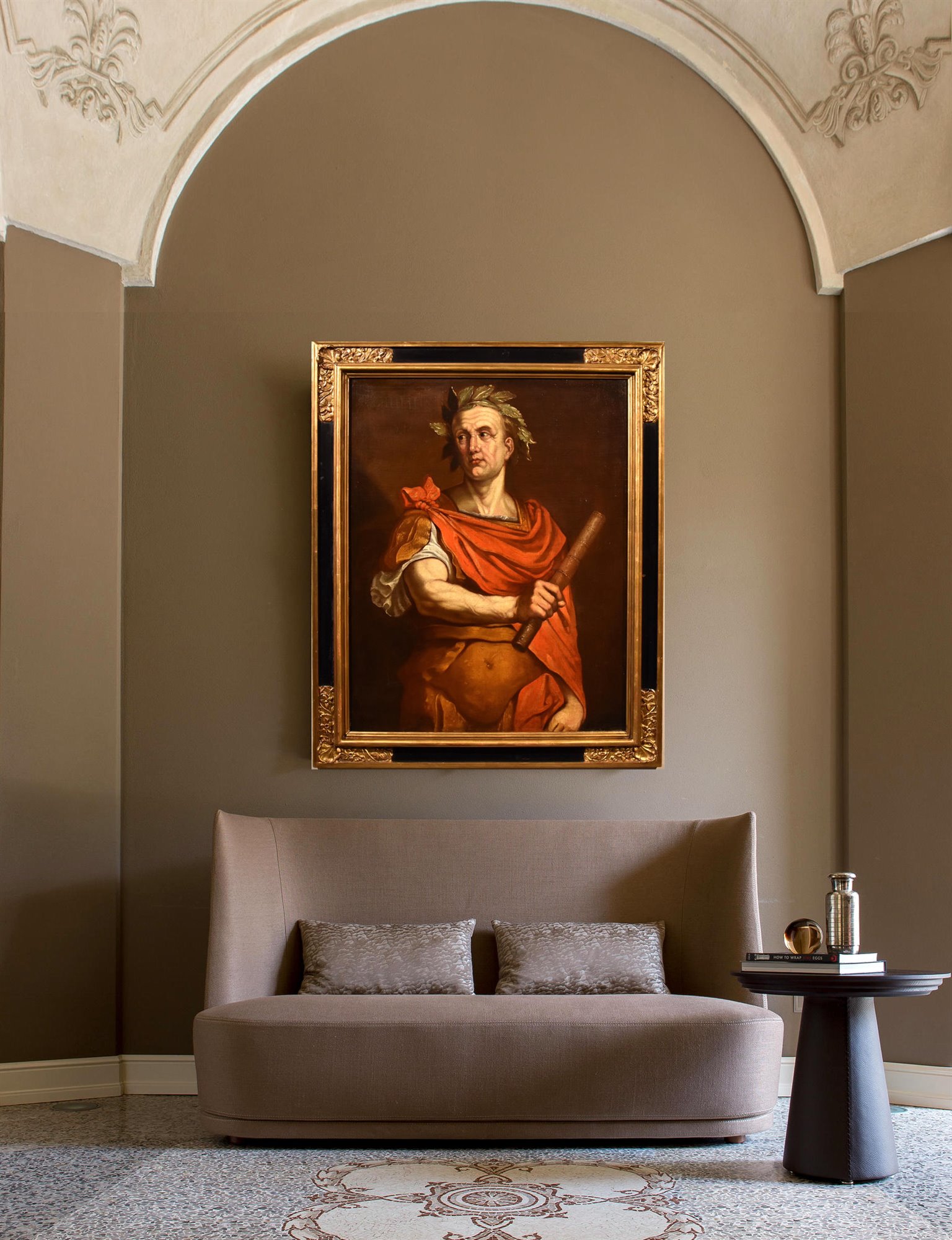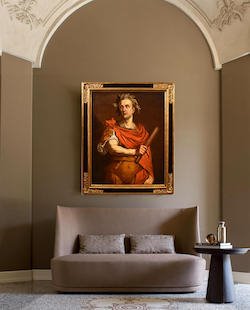Ritratto dell'imperatore Giulio Cesare
Bernardino Campi (Cremona 1522 -1591), bottega di
Bernardino Campi
(Cremona 1522 -1591)
workshop/circle of
(Cremona 1522 -1591)
workshop/circle of
Portrait of Emperor Julius Caesar (Rome 100 BC - 44 BC)
inscribed on top C. IVLIVS / I
inscribed on top C. IVLIVS / I
Oil painting on canvas
107 x 85 cm., Framed 128 x 105 cm.

The Latin writer Suetonius with his work 'De vita Caesarum' inspired Tiziano Vecellio who, in 1537, painted the portraits of the eleven emperors for Duke Federico II of Gonzaga, adorning the walls for a small room in the Palazzo Ducale in Mantua, known as the Cabinet of the Caesars (https://www.lombardiabeniculturali.it/fotografie/schede/IMM-r5020-0001297).*
These effigies were intended to establish the link between the new era and classicism with its splendor, as well as to celebrate the value and wisdom of the rulers, who perceived themselves as valiant new emperors.
The Titian series was so successful that the Cremonese painter Bernardino Campi repeated it several times to meet the constant requests of the most important patrons and lords of Italy: among these Ferdinando d’Avalos, Governor of Milan and Vespasiano Gonzaga.
The series created for Ferdinando d’Avalos, in particular, is now largely kept in the collections of the Capodimonte Museum in Naples (https://catalogo.beniculturali.it/search/Site/1eadf41d1cbc1a1c1770ab95df42d793?agent=Bernardino+Campi).
Since the originals of Titian, first purchased by Charles I of England and then passed into the collections of the Kings of Spain, were destroyed in the fire of the Alcazar in 1734, it was mainly thanks to the replicas of Campi, that the original works are there. known today.
The painting presented, which depicts the first emperor Gaius Julius Caesar (Rome 100 BC - 44 BC), presented with the typical symbols of the victorious general: the laurel wreath on the head and the purple cloak, therefore fits into one of these numerous reproductions of the Eleven Caesars that Bernardino Campi's workshop did not stop replicating in the following decades, thanks to the contribution of numerous students.
In the work of the workshop the influence of the master is clearly present in the parts that express the linear decorativism and the search for preciousness in the details typical of Bernardino Campi, capable of giving the image, together with the impact of "power", even an original affectation.
The restored painting is in excellent conservation conditions and is completed by a pleasant frame.
Like all our objects, the work is accompanied by a certificate of authenticity and a descriptive card.
Follow us also on:
* Mantova - Palazzo Ducale - Gabinetto dei Cesari





